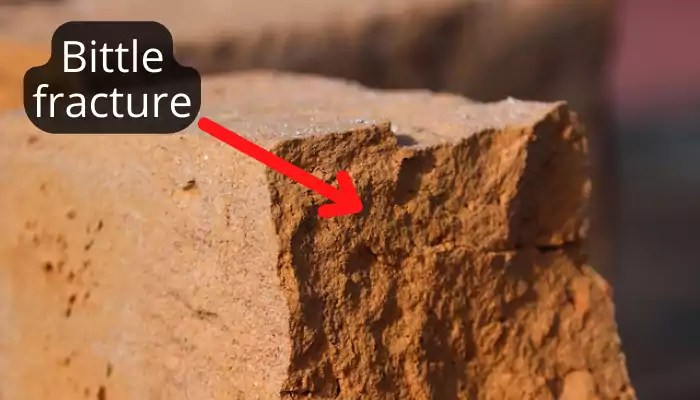Estimate the theoretical fracture strength of a brittle material – Embark on a comprehensive exploration of fracture strength estimation for brittle materials. This guide delves into the fundamental concepts, experimental techniques, and practical applications, providing a thorough understanding of this critical property.
Understanding the theoretical fracture strength of brittle materials is paramount in engineering design and safety assessments. This guide unravels the intricacies of fracture mechanics, Griffith’s theory, and experimental methodologies, empowering readers to accurately predict and mitigate fracture risks.
Material Properties
The material properties of a brittle material play a crucial role in determining its fracture strength. These properties include:
- Young’s modulus (E):Measures the stiffness of the material, indicating its resistance to deformation under stress.
- Poisson’s ratio (v):Describes the material’s tendency to contract in one direction when stretched in another.
- Yield strength (σy): Represents the stress at which the material begins to deform plastically.
Fracture Mechanics Concepts

Stress Intensity Factor (K)
The stress intensity factor (K) is a measure of the stress concentration at the tip of a crack. It is a critical parameter in fracture mechanics, as it determines the likelihood of crack propagation.
Critical Stress Intensity Factor (Kc)
The critical stress intensity factor (K c) is the value of K at which a crack will propagate unstably, leading to fracture. It is a material property that characterizes the fracture resistance of a material.
Modes of Fracture
Brittle materials typically fail under three modes of fracture:
- Mode I:Opening mode, where the crack surfaces move directly apart.
- Mode II:Sliding mode, where the crack surfaces slide past each other in a shear motion.
- Mode III:Tearing mode, where the crack surfaces tear apart in a perpendicular direction to the crack plane.
Griffith’s Theory

Griffith’s theory of brittle fracture provides a fundamental understanding of how cracks propagate in brittle materials. It states that the fracture strength of a material is determined by the balance between the elastic strain energy stored in the material and the surface energy required to create new crack surfaces.
Griffith’s Equation, Estimate the theoretical fracture strength of a brittle material
Griffith’s equation for the theoretical fracture strength (σ f) of a brittle material is:
σf= (2Eγ/πa) 1/2
where:
- E is Young’s modulus
- γ is the surface energy
- a is the crack length
Experimental Techniques: Estimate The Theoretical Fracture Strength Of A Brittle Material

Tensile Testing
Tensile testing is a common technique for measuring the fracture strength of brittle materials. In this test, a specimen is subjected to a uniaxial tensile load until it fails.
Fracture Toughness Testing
Fracture toughness testing is another method for determining the fracture strength of materials. It involves measuring the critical stress intensity factor (K c) using a notched specimen.
Applications

The theoretical fracture strength of brittle materials is used in various engineering applications, including:
- Design of glass structures:Glass is a brittle material with a low fracture strength. Understanding its theoretical fracture strength is essential for designing safe and reliable glass structures.
- Assessment of concrete strength:Concrete is a composite material that can exhibit brittle behavior under certain conditions. The theoretical fracture strength of concrete is used to evaluate its strength and durability.
- Safety assessments of ceramic components:Ceramics are brittle materials often used in high-temperature applications. The theoretical fracture strength of ceramics is considered in safety assessments to prevent catastrophic failures.
Detailed FAQs
What is the significance of Young’s modulus in fracture strength estimation?
Young’s modulus represents the material’s stiffness and influences the stress distribution within the material under load.
How does Poisson’s ratio affect fracture behavior?
Poisson’s ratio governs the material’s tendency to contract in one direction when stretched in another, influencing the stress state and fracture initiation.
What are the limitations of Griffith’s theory?
Griffith’s theory assumes a sharp crack and homogeneous material, which may not always be applicable in real-world scenarios.